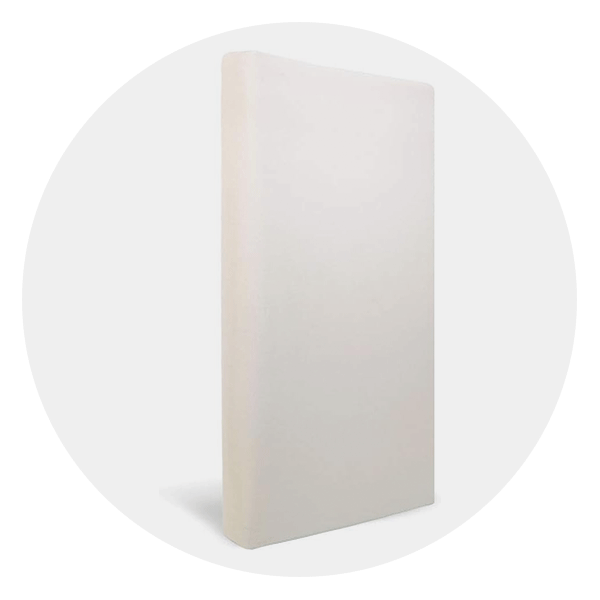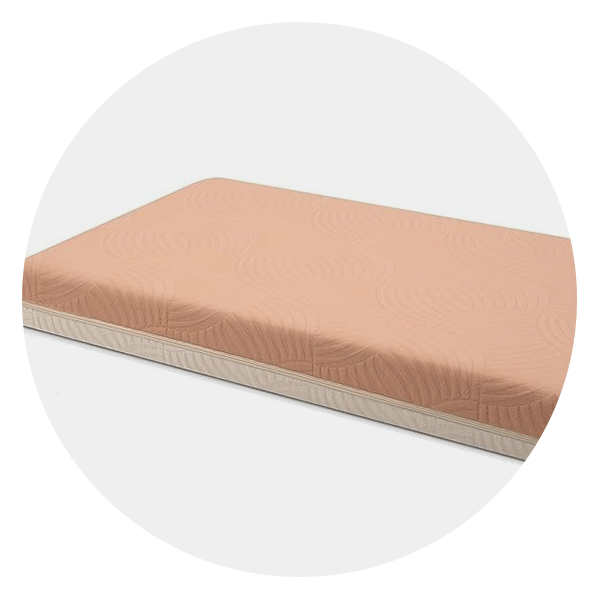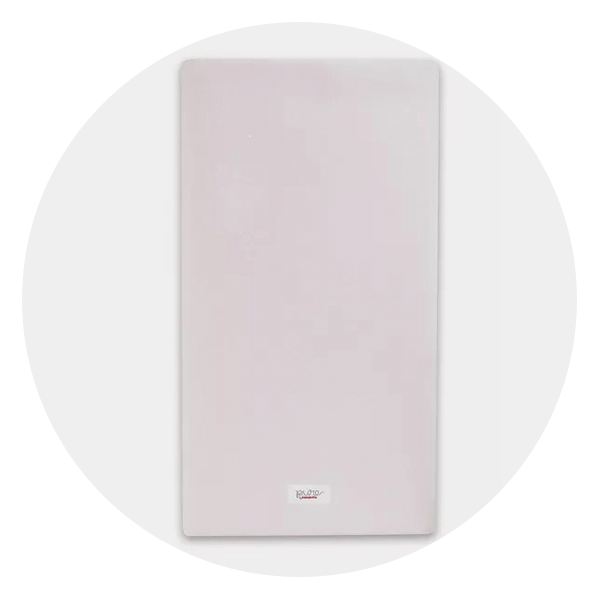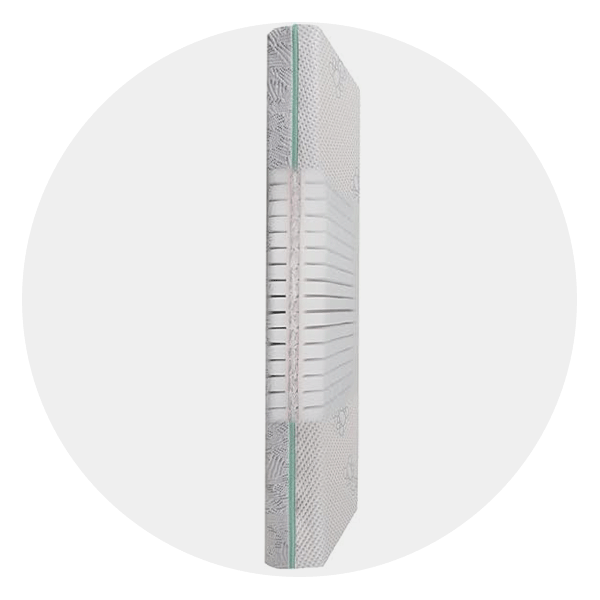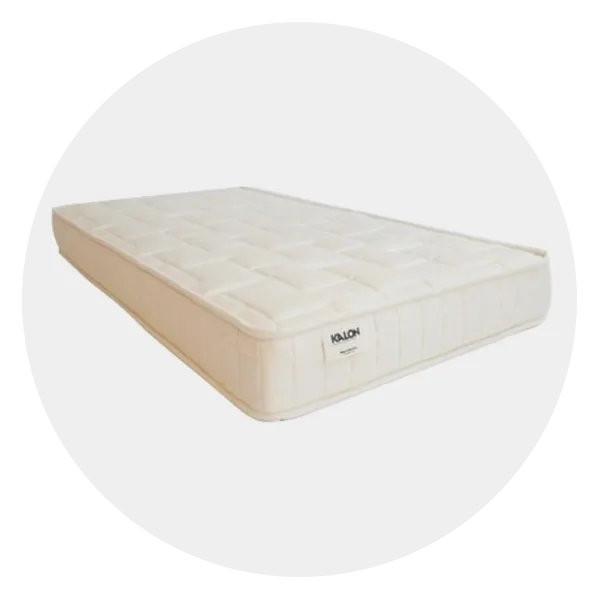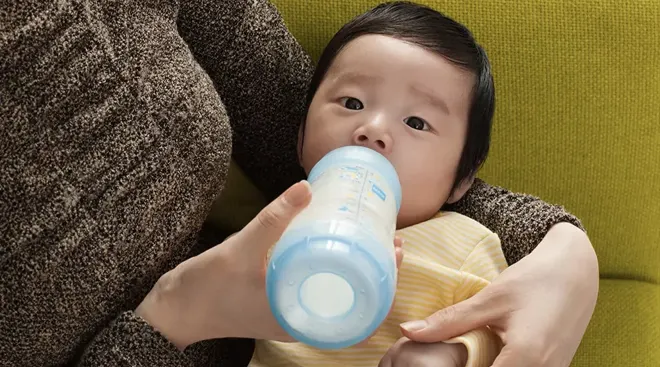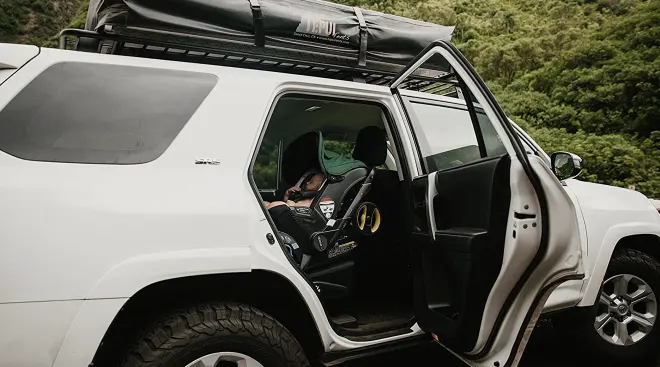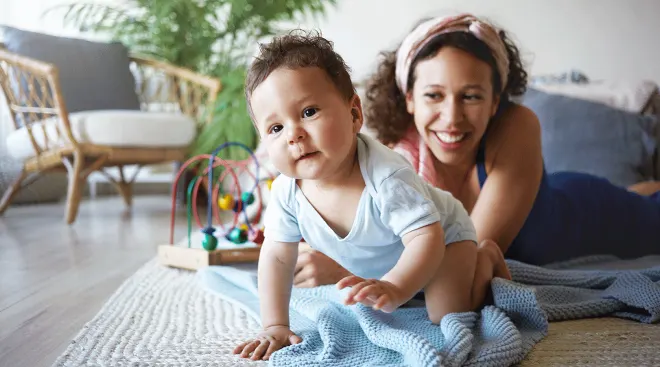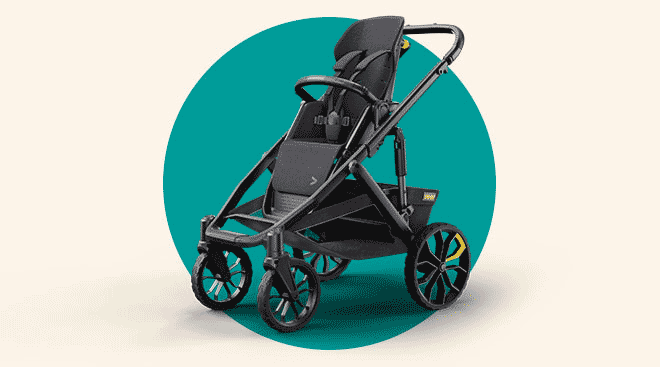Finding the Best Crib Mattress for a Peaceful Night’s Sleep
The first year with baby can feel exhausting, but did you know newborns actually sleep for up to 16 hours (or more) per day? As your little one spends such a large portion of their early life asleep in a crib, it’s important to find a comfortable crib mattress that’s reliably safe. Of course, there’s a lot to consider when it comes to buying a crib mattress: Is it made without allergens and harsh chemicals? Is it comfortable? Will it last? And, most importantly, how firm should it be? Here, we answer all of those questions and more—before listing the best crib mattresses for every need.
There are many types of crib mattresses, the option you choose depends on your particular needs and budget. While it’s okay to buy some baby gear second hand, for hygiene reasons it’s best to buy a crib mattress new. Here are the main types to consider:
- Innerspring crib mattress. Like a traditional full-size mattress, this type features sturdy metal coils surrounded by layers of soft padding. This type of crib mattress is durable and holds its shape well. If you opt for an innerspring mattress, check the coil count—this specification refers to the amount of springs inside. Mattresses with a high coil count tend to be more supportive, but they often come with a high price tag.
- Foam crib mattress. Crib mattresses made from polyurethane foam are another great option. This type tends to be affordable, lightweight and easy to clean. The best options are made with a high-density foam, as this creates a firm and supportive sleep surface.
- Double-sided crib mattress. A double-sided mattress offers the best of both worlds. Typically made from foam, this type features a high-density, firm side for infants and a softer side for toddlers that crave a little extra comfort. They tend to be slightly more expensive than a regular crib mattress, but you’ll be able to use them for longer, which may justify the cost. One thing to note is that after changing the crib sheet, you’ll need to be careful about placing the correct side of the mattress facing upwards.
- Breathable crib mattress. A breathable crib mattress (also known as an air-core mattress) is the newest type to hit the market. These mattresses boast a breathable cover and a core made from food grade polymer, a material that allows air to circulate freely.
- Natural fiber crib mattress. Crib mattresses made from natural fibers—like organic cotton, coconut coir, sugarcane and wool—are a good choice if you dislike synthetic materials. However, they tend to be expensive and the options may be limited.
Of course, safety is going to be at the forefront of a parent’s mind when they look for a mattress for their child; who doesn’t want the safest crib mattress they can find for their little one? According to the American Academy of Pediatrics (AAP), a crib mattress should have a hard, flat surface that doesn’t indent when baby is lying on it. The sleep area should be free from loose bedding and only contain the mattress with a fitted sheet designed for that particular model. Follow these sleep safety guidelines in order to reduce the risk of Sudden Infant Death Syndrome (SIDS), and keep the following tips in mind as you do your research:
- Firmness. It’s important to check how firm a crib mattress is before making a purchase. For safety reasons, infants should sleep on a firm surface that doesn’t indent or contour to the shape of their head when they lie on it. A simple way to test the firmness of a mattress is to press your hand into the center, upon release the mattress should quickly snap back into its original shape. If you can still see an indentation, it’s not firm enough for baby. “It’s important to follow the golden rule for physical safety when shopping for a crib mattress: Go with a firm mattress that fits snugly inside of the crib,” says Ali Alhassani, MD, a pediatrician and head of clinical at Summer Health.
- Density. If you opt for a foam mattress, density is another factor to consider. This unit of measurement refers to the weight of the foam. High density foam mattresses tend to be better quality and more long-lasting. To test the density of a mattress, press the sides to see how pliable it is (denser foam is harder to squeeze).
- Size and fit. Check your measurements to ensure that the mattress will fit snugly inside baby’s crib. According to the Consumer Product Safety Commision (CPSC) sleep safety guidelines, a gap larger than two fingers between the sides of the crib and the mattress can pose a safety risk.
- High-quality materials. Crib mattresses are strictly regulated. But it’s still important to choose products made from top-grade materials. Our advice? Check the product certifications to ensure the mattress is up to par. Greenguard Gold certified items have passed rigorous testing for harmful chemicals. Another certification to look out for is the CertiPUR-US seal, which indicates the polyurethane foam used meets the highest standards for content, emissions and durability.
- Reputability of the company. “Stick to the top brands,” says Gina Posner, MD, a board-certified pediatrician in Fountain Valley, California. “It’s so important to get one that’s tried and true, and from a company that has good safety standards.” Even once your purchase is complete, it’s important to keep tabs on your mattress over time: “Parents should regularly inspect their cribs and mattresses as well as stay updated with safety guidelines to ensure their baby is sleeping in the safest environment possible,” Alhassani adds.
Not sure where to begin? Don’t sweat it! We’ve done the research and gathered the best crib mattresses on the market, so there’s one less thing to keep you up at night.
Overall best crib mattress
- Fully washable
- Firm and supportive
- Breath-Thru Technology
- High price point
Parents rave about the material of this breathable crib mattress, which keeps baby cool all night long and offers peace of mind to parents of tummy-sleeping babies. The patented mattress core is made from 90 percent air to deliver superior airflow. The cherry on top though, is that this hypoallergenic mattress doesn’t contain any foam, latex, springs or glue, making it completely recyclable. Oh, and it’s Greenguard Gold certified of course. Plus, the Newton is 100 percent washable—simply unzip the cover and pop it in the wash then soak the core in the tub. Thanks to all these impressive features, the Newton was named the best crib mattress in multiple Best of Baby awards cycles. Bonus: Get $35 off Newton mattresses over $249 with code BUMP35.
Type: Breathable | Weight: 14 lbs.
Best organic crib mattress
- Made from GOTS certified organic cotton and sugarcane
- Waterproof core and washable cover
- Firm support
- High price point
As with the rest of Naturepedic’s products, this pick earned a spot on our list of the best crib mattresses because of its organic, hypoallergenic materials. It’s equipped with a firm mattress core, made from non-GMO sugarcane, for proper infant support. The soft, cotton cover increases airflow and even has a wipe-clean, waterproof backing. Plus, the double sided design means that this mattress will support your child from infancy to toddlerhood. And this model is Greenguard Gold certified to boot.
Type: Natural fiber | Weight: 14 lbs.
Best breathable crib mattress
- Greenguard Gold-certified and JPMA-certified
- Fully washable mattress cover
- Budget-friendly price tag
- Limited reviews
Breathable crib mattresses that are also affordable and high quality are hard to find. The Delta Children Summer Breeze Mattress manages to check all the right boxes. This mattress is made from a proprietary Cloud Core material, which boasts open-air construction and is resistant to mold and mildew. The soft knit cover is removable and can be tossed in the wash, while a waterproof barrier helps protect the mattress from diaper blowouts and leaks. Enjoy both a firm and softer side to flip when your child gets older, and rest assured that the mattress is Greenguard Gold-certified and JPMA-certified for safety. And all this clocks in at under $150? We're sold!
Type: Breathable | Weight: 12 lbs.
Best mini crib mattress
- Waterproof cover
- Hypoallergenic
- Machine washable
- Won’t work for larger cribs
A mini crib is a good option for small spaces, but remember that you’ll have to buy a mini crib mattress to match. The Little Dreamer Mini Crib Mattress fits perfectly inside a miniature crib, and is crafted from CertiPUR-US certified foam, with safe seams and a waterproof cover. It’s also dual-sided: the firmer foam side is perfect for babies, while the memory foam side is a little more plush for toddlers. If that’s not enough, it’s also hypoallergenic, antimicrobial, stain and odor-resistant and machine-washable.
Type: Foam | Weight: 7.19 lbs.
Best waterproof crib mattress
- Machine-washable cover with a waterproof lining
- Double-sided mattress is safe for infants and toddlers
- Greenguard Gold certified
- Some parents say that the zipper is poor quality
Not only is this crib mattress double-sided and waterproof, it’s also made from non-toxic, Greenguard Gold certified materials. The firm side is perfect for infants while the softer side supports toddlers’ sleep needs. And you can rest easy knowing this hypoallergenic mattress is dust mite and allergen resistant. The waterproof cover is easy to take on and off, which is sure to come in handy if you find yourself grappling with a late-night diaper blowout.
Type: Foam | Weight: 9 lbs.
Best infant mattress
- Water- and stain-resistant cover
- Suitable for infants and toddlers
- Greenguard Gold and CertiPUR-US certified
- Spare sheets sold separately
With an extra-firm foam side for babies and a softer, plush side for toddlers, this convertible crib mattress gives you plenty of bang for your buck. Better yet, the high density foam doesn’t contain any vinyl, polyethylene or PVC. It’s also water-resistant, stain-resistant and odor-resistant, making messes (trust us, there will be messes) easier to deal with.
Type: Foam | Weight: 10.8 lbs.
Best crib mattress for healthy development
- Designed to support healthy spine and skull development
- Certipur-US foam and Greenguard Gold certified adhesives
- Suitable for infants and toddlers
- High price point
Next up on our list of the best crib mattresses, is an innovative product designed to combat plagiocephaly (flat head syndrome). The patented design reduces pressure on the head while keeping the spine correctly aligned. It comes with a removable and washable cover, and the interior mattress core has knitted-in air channels to increase breathability. Although this pick is a little pricey, it’s designed to grow with your child, offering an extra-firm side for proper infant support and a softer side for toddlers.
Type: Foam | Weight: 10 lbs.
Best eco-friendly crib mattress
- Made from organic, biodegradable materials
- Double-sided design is suitable for infants and toddlers
- Water resistant
- High price point
Last up on our list of the best crib mattresses is this eco-friendly option by Kalon. The dual-sided mattress is made from 100 percent natural, sustainably sourced materials. The firm infant side is made from palm coir, which is breathable, water-resistant and antimicrobial. The reverse is made from organic latex with built-in pressure points for optimal airflow and cushy, spinal support. Granted it’s expensive, but it's a small price to pay for a peaceful night's sleep.
Type: Natural fiber/latex | Weight: N/A
A crib mattress is an important tool to keep your baby safe and comfortable during sleep. To choose the best crib mattresses, we consulted with two pediatricians for recommendations on the must-have features to look for in these sleep surfaces. We then looked at the most popular crib mattresses on the market, narrowing the field based on elements like quality of materials, construction and design. Every mattress chosen meets standards set by the American Academy of Pediatrics for safe sleep. Reviews from real parents were considered, with every mattress chosen having an average review of at least four stars or higher.
Interested in learning more about our editorial process? Read about how our team develops and reviews all articles here.
Please note: The Bump and the materials and information it contains are not intended to, and do not constitute, medical or other health advice or diagnosis and should not be used as such. You should always consult with a qualified physician or health professional about your specific circumstances.
Plus, more from The Bump:
Gina Posner, MD, is a board-certified pediatrician at MemorialCare Orange Coast Medical Center in Fountain Valley, California.
Ali Alhassani, MD, is a pediatrician and head of clinical at Summer Health.
United States Consumer Product Safety Commission, Safe Sleep – Cribs and Infant Products
Healthy Children (AAP), How to Keep Your Sleeping Baby Safe: AAP Policy Explained, September 2023
Navigate forward to interact with the calendar and select a date. Press the question mark key to get the keyboard shortcuts for changing dates.



































